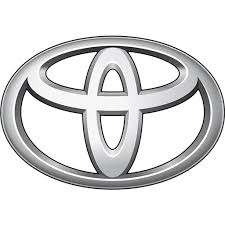Early Explorations: Laying the Groundwork (1995-2008)
The earliest titles show "Lean" principles, originally from manufacturing, beginning to permeate the technology and information domains. In 1995, we see a "Plea for Lean Software" and its application in "resource management in ATM based integrated networks," suggesting an early recognition of the need for efficiency and reduced waste in software and network infrastructure. By 1997, "Lean Management" was being explored with case studies, even in financial services, indicating a broader organizational interest.
As the new millennium began, the focus expanded. In 2003, the concept of a "Lean-Information-System" emerged, emphasizing problem-oriented design. A notable shift in 2007 was the appearance of "Resource Lean and Portable Automatic Text Summarization," showcasing how "lean" began to describe characteristics of algorithms and resource efficiency, not just processes. This period culminated in 2008 with a direct comparison, "Agile Versus Lean," signaling the start of a long-running discussion on the relationship between these two popular methodologies within the software and IT spheres.
Software, IT, and the Rise of Lean Startup (2010-2013)
This period marks a significant acceleration in the application of Lean principles, particularly within software development and IT organizations. The question, "Can IT lean against the wind?" (2010), indicates a growing imperative for IT to adopt lean practices. The relationship between Lean and Agile became a central theme, with titles like "Implementing Lean and Agile Software Development in Industry" (2010) and "My Agile Journey: XP, Scrum, Lean, Kanban & Back Again" (2012) exploring their synergy and integration. The very concept of "Lean Software Development" became a standalone area of focus, with tutorials and discussions on "Making Architecture Visible to Improve Flow Management" and "Lean Solutions to Software Product Management Problems" (all 2012).
A pivotal development was the explicit emergence of "Lean Startup" as a distinct methodology. The title "Lean Startup: Why it Rocks far more than Agile Development" (2012) highlights its growing prominence and perceived advantages. Beyond software, Lean's versatility became apparent with "Lean Thinking Applied to System Architecting" (2011), "Lean Media Production" (2013), and even "Airspace analysis and design by data aggregation and lean model synthesis" (2013), underscoring the notion that Lean was "More than a Shop-Floor Fad" (2011).
Enterprise-Wide Adoption and Diversification (2014-2016)
During these years, the application of Lean principles broadened considerably, moving beyond specific projects or departments to influence the entire organization. The concept of "Lean Enterprise" became a dominant theme, appearing multiple times across titles (2014, 2015, 2016), often emphasizing "Enabling Innovative Culture." This suggests a shift towards systemic, cultural change driven by Lean.
The interplay with Agile continued, with discussions on "Navigating Politics in Agile Lean Initiatives" (2014) and explicitly "Mixing Lean UX & Agile Development" (2014), indicating a practical integration of Lean principles into user experience (UX) design processes. Lean's reach also extended into new, diverse domains, such as "Anwendung von Lean-Prinzipien im Erdbau" (applying Lean principles in earthworks, 2014), "Lean, Green, and Lifetime Maximizing Sensor Deployment" (2014), and "Lean-Agile Procurement" (2016). Furthermore, the application of "knowledge-lean techniques" for "Paraphrase identification" (2016) demonstrated how Lean's efficiency focus was influencing advanced computational tasks like natural language processing, highlighting a continued evolution from process-based to resource-based "lean" definitions.
Digital Integration and Design Focus (2017-2019)
This period saw Lean deeply intertwining with digital transformation, design methodologies, and specific industry applications, particularly in construction. "Lean Design Thinking" (2017) and titles like "Using Lean Concepts that Help the Design Transformation at Nordstrom" (2017) illustrate a clear convergence, recognizing Lean's value in creative and user-centered processes. "Lean Startup" maintained its strong presence, with discussions on "Why Companies Need Lean Startup Techniques" and "Tips & Tricks Using Lean Startup" (both 2017), signifying its maturation and widespread adoption.
A significant trend was the integration of Lean with Building Information Modeling (BIM) in construction. Titles like "Konzept einer BIM-basierten smarten Bauablaufplanung unter Berücksichtigung von Lean-Prozessstrategien" (2017) and "Ein Beitrag zur digitalen Transformation der Lean Construction am Beispiel der BIM-basierten Taktplanung und Taktsteuerung" (2019) show Lean as a crucial enabler for digital and smart construction practices. "Lean UX communication strategies" (2018) further cemented Lean's role in user experience. Moreover, there was a focus on the underlying architecture for digital Lean production, as seen in "Entwicklung einer Referenzarchitektur zur Realisierung von Methoden der Lean Production mittels digitaler Technologien" (2018), pointing towards a more structured approach to digital implementation.
Deepening Integration and New Frontiers (2020-2023)
The most recent years demonstrate a continued refinement of Lean's application, its deeper integration into modern software development and IT operations, and its expansion into emerging technological fields. The integration of Lean with other popular methodologies became even more seamless, as exemplified by "What do agile, lean, and ITIL mean to DevOps?" (2020), showcasing Lean's role in streamlining IT operations. The focus on "Defining Gaps in Lean" (2020) suggests a maturity in its adoption, where practitioners are now looking to optimize and overcome limitations rather than just implement.
Lean continued to be a driving force for digital transformation in various sectors, such as "Transforming a Project-Based IT Company Into a Lean and Design-Led Digital Service Provider" (2020) and "Productivity Improvements in Construction Transport Operation through Lean Thinking" (2021). The emergence of "Lean Inception" (2022) and "Lean UX Research" (2022) indicates a more formal, structured, and research-driven approach to applying Lean in the early stages of product development and user experience. Crucially, the latest titles highlight Lean's expansion into data-intensive fields: "The Lean Data Scientist: Recent Advances Toward Overcoming the Data Bottleneck" (2023) and "Lean evolutionary machine learning by multitasking simpler and hard tasks" (2023). This marks a significant new frontier, where Lean principles are now directly addressing challenges in data processing, machine learning efficiency, and bottleneck resolution within complex data ecosystems.





